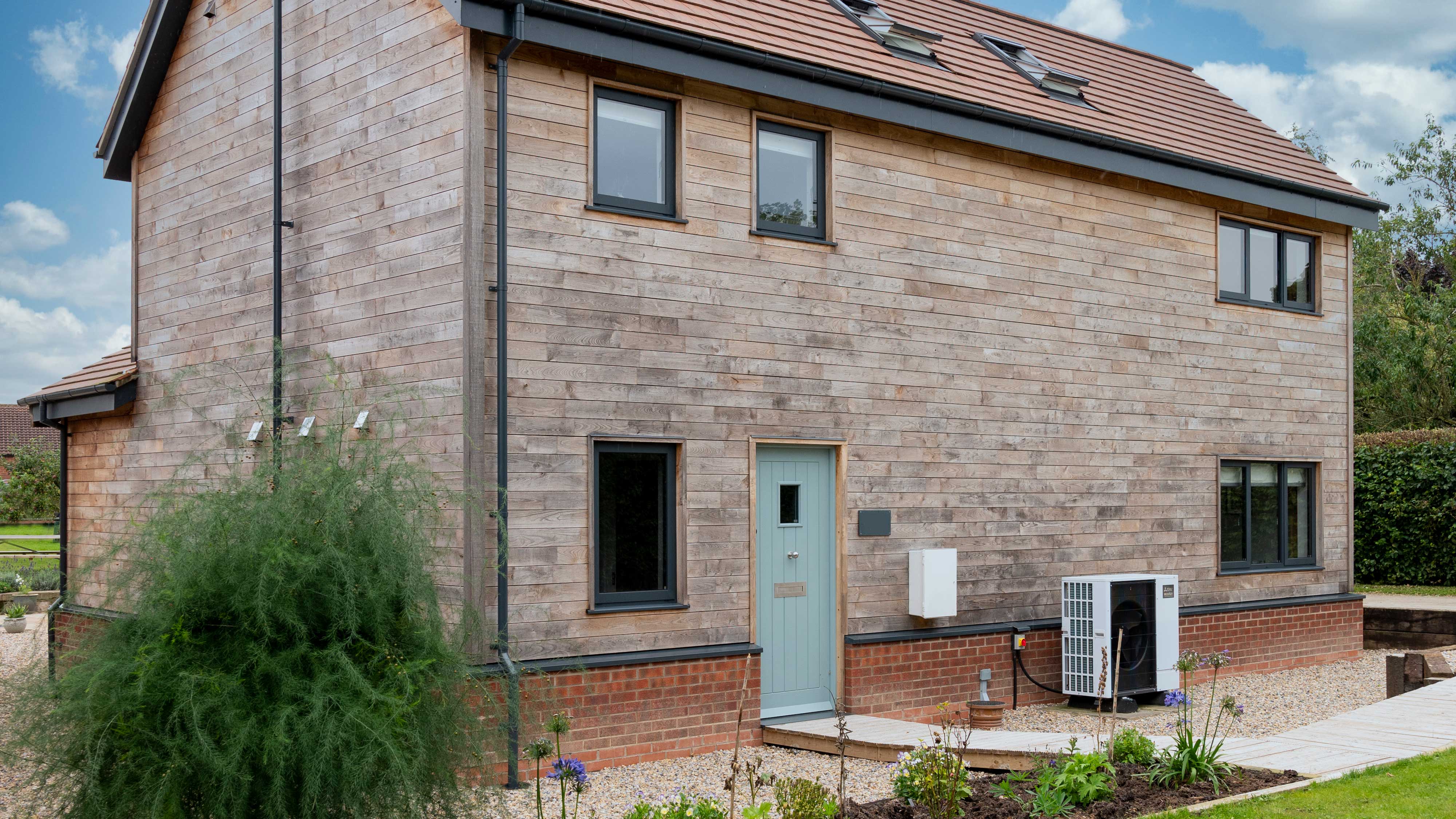Air source heat pump positioning: What to consider and how to get it right
Air source heat pump positioning is a key consideration when installing this renewable tech at your home. Here's what you need to consider in five steps

Air source heat pump positioning is one of the most common questions I get asked when homeowners are looking at specify this renewable technology.
There is a common train of thought that the outdoor unit should be placed on the south side of the property where it will benefit from the heat from the sun. However, there are a lot of variables to consider when siting an air source heat pump and unfortunately in the greater scheme of things the sun is only a very small one.
In fact, choosing where to position an air source heat pump should be dictated by a location which offers free moving air, the distance to the distribution pipework, effective mitigation of noise pollution and of course aesthetics — not simply the orientation to the sun.
While a good installer will advise on location, here we take you through some key considerations with regards to where the outdoor unit ideally should – and shouldn't – be positioned.
1. Air source heat pump positioning might be dictated by planning
Planning permission for an air source heat pump could be the first hurdle when deciding on a suitable location.
This will usually be granted under general permitted development rules (GPDR). However, these do not cover installation to the front aspect of the property, and the noise impact of the specific heat pump unit must also be calculated in relation to any windows on habitable rooms on adjoining properties.
2. The distance from the manifold is key
When installing an air source heat pump, distance from the heat pump outdoor unit to the heating manifold or hot water cylinder is very important.
Whatever the distance, the pipes will need to be insulated. However, a longer pipe run will have a greater heat loss, require improved insulation and could have a greater circulation pump energy demand, which will all add to air source heat pump costs — not only to the installation but to the running costs as well.
Keep these pipe runs as short as practicable and make sure that they are insulated with a high quality, waterproof, UV resistant and rodent-protected insulation.
3. Consider noise when siting an air source heat pump
Also important is whether the heat pump will disturb you. While people often wonder are air source heat pumps noisy, most new heat pumps aren't and the sound output is calculated by the installer.
However, if placed outside a bedroom window or right next to a patio or veranda, or even next to the neighbour's windows, then noise could be an issue when it runs at full power.
4. A south-facing orientation isn't always best
Direct sunlight is not actually a benefit unless the heat pump is covered in snow. In the latter case a roof would actually be a better solution to protect the heat pump and keep the air flow unrestricted.
The argument may be that the air around the heat pump will be warmer on the south side of the property, but this is not necessarily the case because an air source heat pump moves a lot of air, up to around six cubic meters per second, and the compressor only actually starts when the fan has been running for a couple of minutes. The air will then be cooler and thus there will be no advantage of the unit being in the sun on the south side of the building.
On older technology heat pumps, the sunlight can actually also be an issue as many of them have sensors mounted on the casing that can get ‘confused’ by the heat from the sun, which causes it to run erratically and not according to the room thermostats. What's more, the hot water production can be limited, or in some cases completely overridden, on hot days.
5. Avoid positioning an air source heat pump directly next to parking or paths
Your heat pump should be in a position with free flowing air, with a clear area of about two metres in front of the fan and also no direct prevailing winds to counter the fan action.
This is because air coming out of the heat pump can be around 10 degrees cooler than ambient (even in winter) and if this cool air gets short circuited back into the heat pump it will lower the efficiency.
As the air is cold it makes sense to avoid positioning the heat pump near a walkway, parked vehicles or sensitive plants. When the ambient temperature is below 10 degrees, the air coming out of the heat pump can be below zero — this could then potentially freeze the path, vehicles or plants in front of it, causing a safety hazard or material damage.
Get the Homebuilding & Renovating Newsletter
Bring your dream home to life with expert advice, how to guides and design inspiration. Sign up for our newsletter and get two free tickets to a Homebuilding & Renovating Show near you.
David is a renewables and ventilation installer, with over 35 years experience, and is a long-standing contributor to Homebuilding and Renovating magazine. He is a member of the Gas Safe Register, has a Masters degree in Sustainable Architecture, and is an authority in sustainable building and energy efficiency, with extensive knowledge in building fabrics, heat recovery ventilation, renewables, and also conventional heating systems. He is also a speaker at the Homebuilding & Renovating Show.
Passionate about healthy, efficient homes, he is director of Heat and Energy Ltd. He works with architects, builders, self builders and renovators, and designs and project manages the installation of ventilation and heating systems to achieve the most energy efficient and cost effective outcome for every home.

